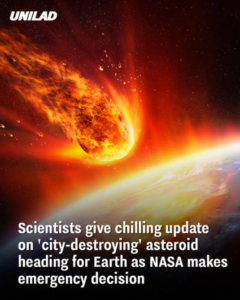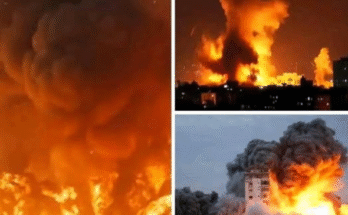NASA has announced an emergency initiative to closely monitor asteroid 2024 YR4, which currently has a 1-in-43 chance of colliding with Earth on December 22, 2032. Discovered in December 2024, this asteroid is estimated to be up to 300 feet (90 meters) wide, comparable in size to landmarks like London’s Big Ben or the Statue of Liberty. An impact from an asteroid of this magnitude could result in catastrophic damage, similar to the 1908 Tunguska event that flattened approximately 830 square miles (2,150 square kilometers) of Siberian forest.
Utilizing the James Webb Space Telescope
To refine their understanding of 2024 YR4’s size, trajectory, and potential impact, NASA has granted astronomers emergency access to the James Webb Space Telescope (JWST). The JWST’s advanced infrared capabilities will allow scientists to determine the asteroid’s exact dimensions and assess its threat level more accurately. Initial observations are scheduled for March, when the asteroid reaches peak brightness, with a follow-up session planned for May as it moves away from Earth. These observations are crucial for developing effective mitigation strategies if necessary.
Potential Impact and Damage Assessment
Current estimates suggest that if 2024 YR4 were to collide with Earth, it could explode with the energy equivalent of 15 megatons of TNT—100 times more powerful than the atomic bomb dropped on Hiroshima. Such an explosion would devastate an area within a two-mile radius of the impact site, causing massive destruction and potential loss of life. While the impact would be locally catastrophic, it is not expected to cause global effects.
International Collaboration and Mitigation Strategies
The increasing probability of impact has prompted international space agencies to consider various deflection methods to prevent a potential collision. Proposed strategies include:
-
Kinetic Impactors: Deploying a spacecraft to collide with the asteroid to alter its trajectory.
-
Gravity Tractors: Using a spacecraft’s gravitational pull to gradually change the asteroid’s path.
-
Nuclear Explosions: Detonating a nuclear device near the asteroid to change its course, though this method is complex and subject to international treaties prohibiting nuclear explosions in space.
The European Space Agency’s Space Mission Planning Advisory Group is scheduled to discuss these potential responses in an upcoming meeting.
Ongoing Monitoring and Public Communication
As more data is collected, scientists anticipate that the probability of 2024 YR4 impacting Earth will decrease. Continuous monitoring and analysis are essential to refine impact predictions and develop appropriate response strategies. NASA and other space agencies are committed to keeping the public informed about any significant developments regarding this potential threat.
In summary, while the current risk assessment of asteroid 2024 YR4 warrants close observation and preparedness, ongoing international collaboration and advanced technological efforts are in place to address the potential threat effectively.


